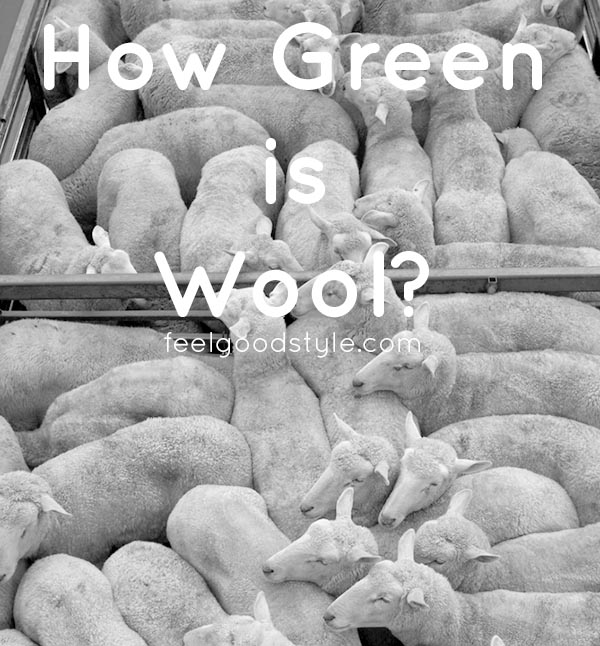The UK Campaign for Wool touts that Wool is Green, but how green is wool, when we follow it from farm to fabric?
The Wool is Green campaign says that wool is “Natural, Renewable, Biodegradable.” But are those the only criteria that make a fabric eco-friendly? Joshua Katcher delves into wool production to explain why wool may come from nature, but the idea that wool is green glosses over some serious issues with wool production.
Related Reading: Cruelty in the Leather Industry
Katcher busts some common misconceptions about how wool is produced, and he starts with pointing to something that seems obvious at first: wool comes from sheep.
Duh, right?
Here is the thing: we picture happy sheep bounding through an open pasture, and a kindly farmer giving that sheep a haircut that magically becomes a sweater. But that picture is very inaccurate. Here’s how it actually goes down.
When we raise animals as a commodity, we begin to see them as mere things. Sheep in industrial wool operations often live in very confined areas and suffer painful medical procedures without anesthesia. Cruelty is as rampant in the wool industry as it is anywhere else that animals are farmed on a large scale. This video gives you a look into an industrial sheep’s day:
Beyond the terrible living conditions, the Wool is Green campaign overlooks the impacts of housing and feeding sheep for wool production.
Just like cows, chickens, and pigs, sheep need food, water, and space to live. That takes resources. We use water and soil to grow feed for sheep. The sheep eat the food and drink that water, and they create waste. Just like in other large-scale agricultural operations, that waste has to go somewhere. And often that somewhere is into local waterways.
Watering and raising crops to feed those animals also means we are diverting land and resources that we could be using to feed people. Animal rights extend to human rights. Why are we using land to raise feed for animals that we have overbred when we could be feeding those plants to hungry children?
When sheep are “spent” – aka too old to grow good hair for us – they don’t retire to a lovely farm to live out their days. Those sheep go to slaughter.
The final myth that Katcher busts around the whole “wool is green” campaign is that wool is better than synthetics. He points out that in the wool industry, efficiency often equals cruelty. Smaller spaces, lower life quality, more pollution. In the synthetics industry, efficiency often means making something more environmentally responsible. He points to Japanese bioplastics made from waste molasses and lycra made from fermented plant matter instead of petroleum.
I know, wool gets a lot of good press as an eco-friendly fabric, but when you really pull back the veil, the wool industry is far from green. Head over to The Discerning Brute to read Katcher’s whole piece – it’s very eye-opening!


